Cunnamulla P-12 State School has been lucky enough to team up with the RESQ+ - Organic Garden staff so that students of all ages (Preparation to Year 12) can experience a way of gardening that has 'care of the land' as its core principle. When students come to the land to experience first-hand what it is like to develop areas that thrive with the interdependent cooperation of natural processes, they begin to see that pesticides and other unnatural/artificial influences on production are not only harmful to nature but also unnecessary.

Organic Gardening - Cunnamulla Style
by Jo_Murphy
Rapid Employment Services Queensland is a government-funded enterprise that supports community ventures.
Capitalising on a Natural Love of the Land
Cunnamulla children learn about caring for the land - and caring for their own wellbeing at the same time.
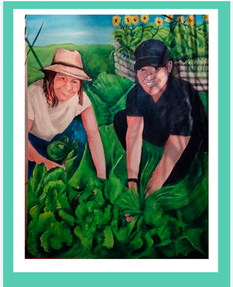 Many of the children and young people who will be taking advantage of the learning- teaching partnership between Rapid Employment Services + (RESQ+) and Cunnamulla P-12 State School (CSS) can boast of a proud First Nation's heritage. The percentage of students indigenous to this land can vary from around 75% - 85% depending on how people travel. This means that the young people who come from at least seven language speaking traditions already have a connection to and a respect for the land. This means that as we run our cooperative organic gardening projects, we are learning with, and learning from the students. But more than this, we are providing them with time and space within which to reconnect with the land, to cultivate it, and to touch base with their own feelings. By doing this we are encouraging community members to be proactive in the way they self regulate. Providing this space means that students can get in touch with their feelings in a manner appropriate to culture and relationships. It is a space where family members can be a part of healing moments. In this way, our projects are creating space(s) within which our community can care for emotional wellbeing.
Many of the children and young people who will be taking advantage of the learning- teaching partnership between Rapid Employment Services + (RESQ+) and Cunnamulla P-12 State School (CSS) can boast of a proud First Nation's heritage. The percentage of students indigenous to this land can vary from around 75% - 85% depending on how people travel. This means that the young people who come from at least seven language speaking traditions already have a connection to and a respect for the land. This means that as we run our cooperative organic gardening projects, we are learning with, and learning from the students. But more than this, we are providing them with time and space within which to reconnect with the land, to cultivate it, and to touch base with their own feelings. By doing this we are encouraging community members to be proactive in the way they self regulate. Providing this space means that students can get in touch with their feelings in a manner appropriate to culture and relationships. It is a space where family members can be a part of healing moments. In this way, our projects are creating space(s) within which our community can care for emotional wellbeing.
As this essay evolves, you will see why we are now applying for a grant to set up a space on school grounds where students and their families can generate emotional connections within the school and it's community. Because we have a very creative community, and because artistic creativity also promotes wellbeing, we hope to provide an area filled with healing properties called a sensory garden. The staff from RESQ+ believe it would also be healing, and culturally appropriate to ensure this sensory garden is also attractive to butterflies, so that the softness of this cultivation creates a further gentle, calming response. In this article, I will share with you the way we will go about setting up the project.
Linking CSS - RESQ+ Projects to the River Lights Festival
There are many reasons why we are taking an artistic approach to our school project
The article called Synergy of the Cunnamulla Hot Springs and the River Lights Festival shows that Cunnamulla community is collaborative. What used to be a thriving sheep industry based community now seeks to captialise on the synergy created by tourism as a way to sustain and share the gifts of the outback with an International community. It is not surprising then that our school community will be creative within the context of this year's festival. It takes place on 19th - 21st of April 2024.
This year, to remain aligned to the goal of creating restful, calming spaces within which community members can emotionally thrive, our school will be focusing on the generative aspects of organic gardening.
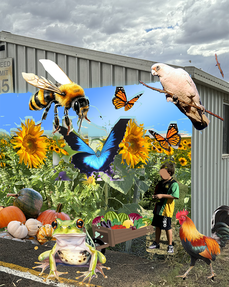
Students will be looking at the interconnections that take place within nature when she is allowed to take her course and fertilise herself naturally. Students are already looking at the life cycle and the propagative properties of creatures like bees, worms, lady beetles, butterflies and others.
Although the image to the left is only a mockup, it gives the reader an idea of how staff will theme a comprehensive school community project.
The images capture the way sunflowers are integral to the process of pollinating.
You can see the chook at the front. The image is pre-emptuve to what we are calling a 'chook tractor' . The project will also call for worm farms and the like.
So, the first reason for taking an integrated approach to theming is to make visible natural interconnections so that we can talk about them and learn from them.
The Benefits of a Sensory Garden
Calming, meditating ,yarning... a space for contemplation
According to Oxford Languages, the word contemplation mean the action of looking thoughtfully at something for a long time. It is thought that the process of stilling the mind is beneficial for healing and also for self regulation as defined by Zones of Regulation, a self management program that runs at CSS. It really means that teachers try not to rouse, but rather ask students to think about their behaviour and take personal responsibility for their actions. Taking personal responsibility is a skill that must be actively sought out and nurtured.
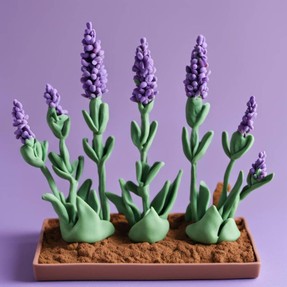 To help students actively become involved in this process, staff are applying for a grant to build a sensory garden in a space at our school where all students, parents and staff can access it. Inviting parents to enjoy this empowering process is a realistic way to nurture the growing sense of belonging at the school.
To help students actively become involved in this process, staff are applying for a grant to build a sensory garden in a space at our school where all students, parents and staff can access it. Inviting parents to enjoy this empowering process is a realistic way to nurture the growing sense of belonging at the school.
Plants such as lavender, peppermint, sage and lemongrass are pungent. Students have already realized that when they crush the leaves between their fingers, the aroma is calming. During the project, students will plant gardens at the front of the school, beneath an already existing mural. The painting was designed by consulting with elders from our community. The painting visually describes a community that interacts with the Warrego River.
We will create butterflies, insects and plants from cardboard because it is readily available and will be easily manipulated. By mixing Bondcrete into the white undercoat that we paint the shapes with, the material will become durable. Once painted with outdoors varnish, waterproof artworks will be produced.
Negotiating and working as a partnership.
An influx of ideas
Please note** When this article was published, it stimulated a great deal of discussion. This paragraph has been added to acknowledge that we have shifted to a new approved prospective site. This means it will be situated in a more protected space where it will be more easily accessed and cared for by the Years 5 & 6. We can still maintain a mural at this site.
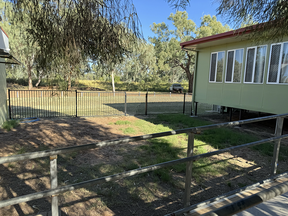
The community consultation process was interesting and it meant that we will have a lot more volunteers than expected. The plans for the sculpted Murray Cod have progressed. The next paragraphs are the original article. It will be interesting to see the progress journaled about here as each stage unfolds. The Primary students involved are very excited by the project and they will be keeping a photographic record of the garden as well as recording growth statistics. Please check regularly to enjoy the updates.
Projected Image of a Sensory Garden
The elements of a Sensory Garden Design.
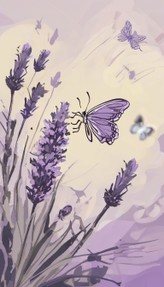
To make the garden we will need to dig the ground with a backhoe and the fertilize it with manure. Once this has been done and well turned, (like a worm does) we will add compost. At RESQ+ we will grow the seedlings for the plants that have been specifically selected to have a calming effect .
The seedlings will be planted when they are sturdy enough to take hold and grow. Once planted, the garden bed will be covered, with bark chips to keep the soil moist. The irrigation will be installed with a timer so that a gentle spray mist will water the plants at a preset time.
The plants selected for the garden will include many that will attract butterflies and bees. Sun flowers will make a golden backdrop for the contrasting lavender display.
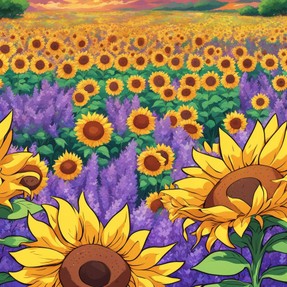
Think of the beauty we can create.
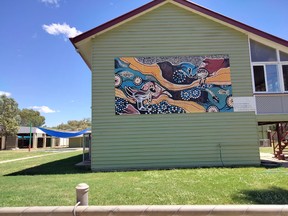
You can see there is plenty of space for a rockery and we can collect rocks for the border of the garden with our guide Dan McKellar. While doing so Cheesy and Dan can talk to the kids about respecting nature and not disturbing things we shouldn't.
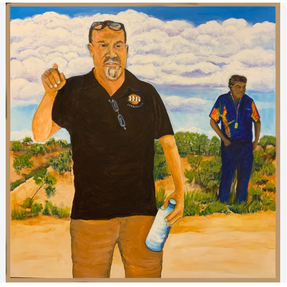
We don't want to disrespect precious sites.
Dreaming Up a Visual Simulation
Using AI to get started.
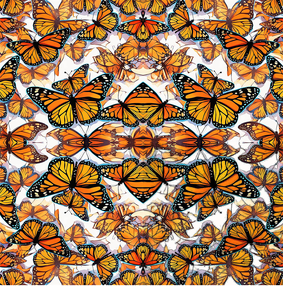 As readers already know, I do use AI. I use it mainly for planning, or for creating a base from which to plan my paintings. In this instance, I am using it to 'dream up' an image so that the kids can visualise what the project might possibly look like. From this point on, they can make their own plans. It is an art teacher's dream to be able to show students alternatives without having to touch the children's work. AI is a thinking, dreaming, planning tool, which is why it is called Dream Up.
As readers already know, I do use AI. I use it mainly for planning, or for creating a base from which to plan my paintings. In this instance, I am using it to 'dream up' an image so that the kids can visualise what the project might possibly look like. From this point on, they can make their own plans. It is an art teacher's dream to be able to show students alternatives without having to touch the children's work. AI is a thinking, dreaming, planning tool, which is why it is called Dream Up.
So here goes.
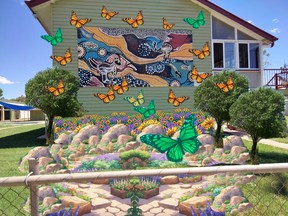 The final project won't end up looking like this. But this simulation does show the young people how we are thinking.
The final project won't end up looking like this. But this simulation does show the young people how we are thinking.
Initially we want to be funded to plant a simple sensory garden.
As well, we will also make butterflies paint them, and enter them in the River Lights Competition. When the Festival is over we can attach them to the wall or they can be placed in the garden on spikes. Next year, we can light the garden up for the Garden Lights section of the River Lights Festival Competition.
The trees on either side of the garden are called Gumby Gumby Trees and they are a local bush tucker healing plant. They will take quite a long time to grow. In the end, this will be a living breathing creation that evolves as the school becomes more used to having a site of contemplation.
Wonderful Waterways of the West
Using water to nourish and as a source of peacefulness and creativity
Water is the source of life throughout the Paroo Shire.
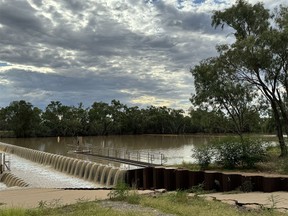 We have the Warrego River, represented in the mural above, as well as the Artesian Basin and all of the hot springs that come from this basin, bringing with them healing and relaxation. We have the weir and it's restful area and river sports and recreation.
We have the Warrego River, represented in the mural above, as well as the Artesian Basin and all of the hot springs that come from this basin, bringing with them healing and relaxation. We have the weir and it's restful area and river sports and recreation.
To show you how a creative venture like this sensory garden project can evolve within a network of creative enthusiasts, I thought I would relate an anecdote.
I have had three large pieces of vermiculite set aside in the art room, just waiting for the time when there was a purpose for them. If you look at the mock up in the section above, I think you will be able to imagine a fountain spraying water gently in the centre of the garden. One of the boys that comes to RESQ+ might want to sculpt the vermiculite while he is out there?
If so -will the community want a sculpture of the beloved Murray Cod?
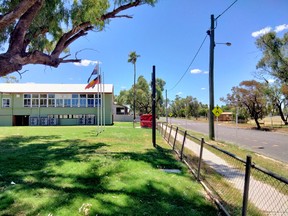
THAT - my friends is the question!
This is the side view of the area under discussion
The red electricity box is becoming old and dilapidated. Do you think we should paint it to match and further enhance the area? I do!
You might also like
How I Use Fabric Pots For GardeningFabric garden bags come in a variety of sizes from small to extra large. Onc...
The Rise of Food Cooperatives and Food Buying Groups; Consumer...Exploring food cooperatives and food buying groups; defining food cooperative...
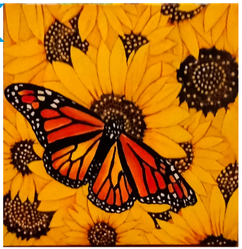


 As We Age - We React to Life's Challenges Differentlyon 03/16/2024
As We Age - We React to Life's Challenges Differentlyon 03/16/2024
 Cunnamulla - Premium Destination Outbackon 12/17/2023
Cunnamulla - Premium Destination Outbackon 12/17/2023
 OpenAI and Watermarkson 02/06/2024
OpenAI and Watermarkson 02/06/2024
 An Australian Marketplace Called RedBubbleon 01/25/2024
An Australian Marketplace Called RedBubbleon 01/25/2024
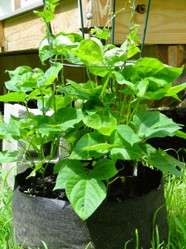
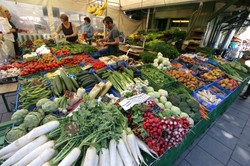
I would be interested to hear your thoughts. Please share your ideas.
https://www.zazzle.com.au/collections...
You will see the long-sleeved shirt with the Monarch Butterfly Pattern in this store.
Yet again, this is not the style I am thinking of. I will sleep on this project ad get back to you.
To answer your first question. The shirts with Monarch Butterflies can be found here. https://www.redbubble.com/shop/ap/159...
Heha, I will work on a long-sleeved shirt on another entirely different site. https://www.redbubble.com/i/t-shirt/P... But you can see where the artist has to get really involved in the design. If you look at the line towards the neck of this TShirt it does not wuite match up . By the end of the day I will have fixed this problem.
Check out the shirts here https://www.redbubble.com/shop/ap/159.... I will show you others
That's great!
Short-sleeved and three-quarter-sleeved t-shirts would work too even as I likeliest would wear long-sleeved t-shirts (and any other kind of sleeved attire ;-D).
You have got me thinking as always.
Thank you for the customized creation!
The monarch colors are beautiful as are their positions, just like they arrange themselves on the oyal-fir trunks of forests associated with the Sierra Madre Mountains of northern and northwestern Mexico.
It would make a beautiful, long-sleeved t-shirt for your store product lines, wouldn't it?
https://wizzley.com/static/uploads/en.... I created this just for you Derdriu
Are you asking 'What are they doing in the habitat' or 'How are they doing?"
I guess travellers introduced them. But as far as the question how are they doing? Extremely well I would say. I see them everywhere. I am writing to my friend Dan to ask about the white moth Indigenous to this area. I am not sure how they are doing. When he tells me - I will tell you. Jo
The image leftward of your title appears to be a painted illustration of a monarch butterfly.
That species has been in the Hawaiian islands since about 1850, soon after non-Hawaiian residents and traders introduced such non-native host plants as first tropical milkweed (Asclepias curassavica) and then crown flower (Calotropis gigantea).
Monarch butterflies like their Hawaiian habitats.
How might monarch butterflies be doing in Australian habitats?
Yes. That would be about it. Most times, the people come back home, though.